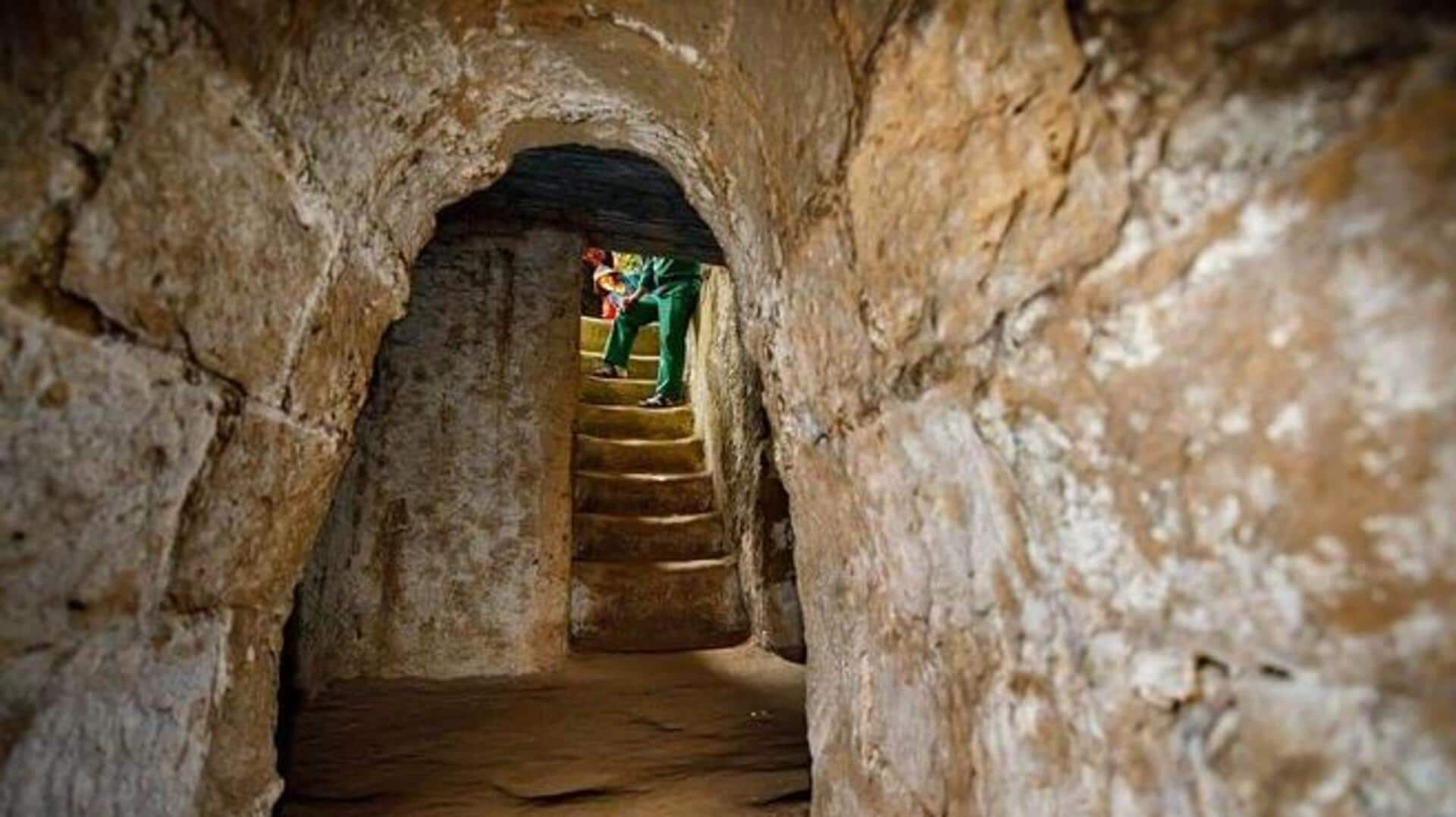
Delve into Vietnam's historical Cu Chi Tunnels
What's the story
The Cu Chi Tunnels in Vietnam, an extensive network of underground passageways near Ho Chi Minh City, played a crucial role in shaping Vietnam's past. These tunnels, used by Viet Cong soldiers as hiding spots, living quarters, and supply routes, today offer a glimpse into the Vietnamese people's ingenuity and resilience during a tumultuous historical period.
History lesson
Step back in time: The War Remnants Museum
Before heading to the Cu Chi Tunnels, visiting the War Remnants Museum in Ho Chi Minh City provides context about Vietnam's historical impact on the country. The museum showcases photographs, military equipment, and personal accounts from both sides of the conflict. This visit will enrich your understanding of what you're about to experience at the tunnels.
Tunnel tour
Explore the underground network
The main attraction is undoubtedly exploring parts of the 250-kilometer-long tunnel network that has been made accessible to visitors. Crawling through these narrow passages gives a palpable sense of what life was like for soldiers and civilians who used them daily. Guides often share stories of how these tunnels served not just as hideouts but also as schools and hospitals.
Cultural experience
Try your hand at traditional Vietnamese rice paper making
Near the Cu Chi Tunnels entrances, visitors encounter local artisans demonstrating the traditional Vietnamese craft of making rice paper. This interactive activity provides a respite from the historical exploration and deeply connects visitors with Vietnam's rich cultural heritage. It offers a unique opportunity to engage in making rice paper, turning it into an educational and enjoyable experience for everyone involved.
Culinary adventure
Savor authentic Vietnamese cuisine
A visit to Cu Chi is incomplete without trying local Vietnamese dishes at nearby eateries or street food stalls. Essential tastes include pho, a savory noodle soup, banh mi sandwiches, and fresh spring rolls, showcasing the area's culinary diversity. Dining where locals do immerses visitors in Vietnam's authentic food culture, making it a crucial part of the Cu Chi experience.